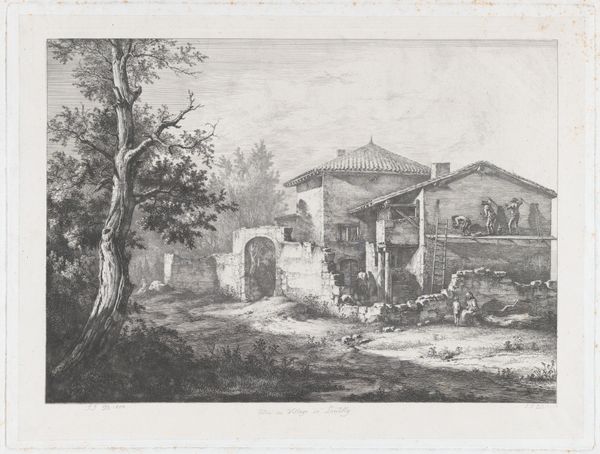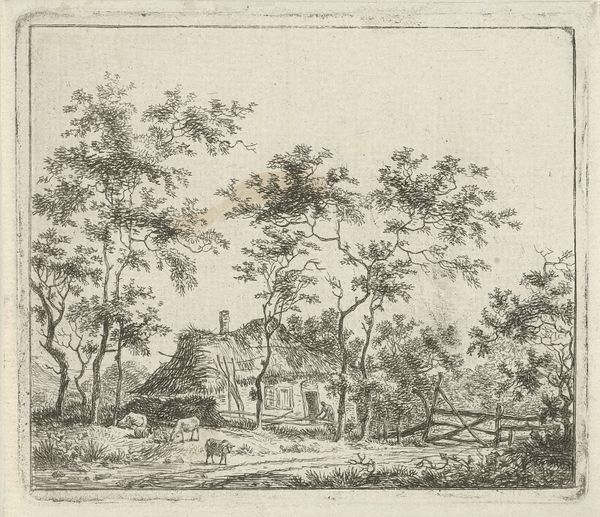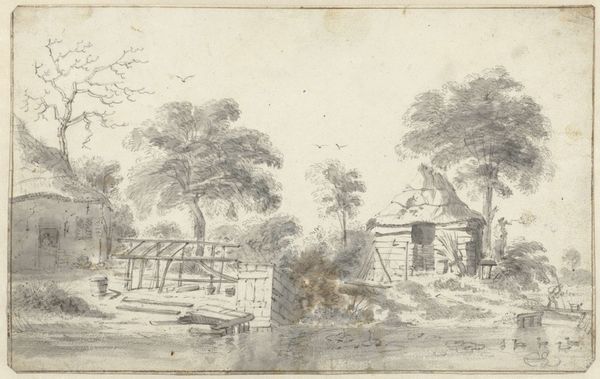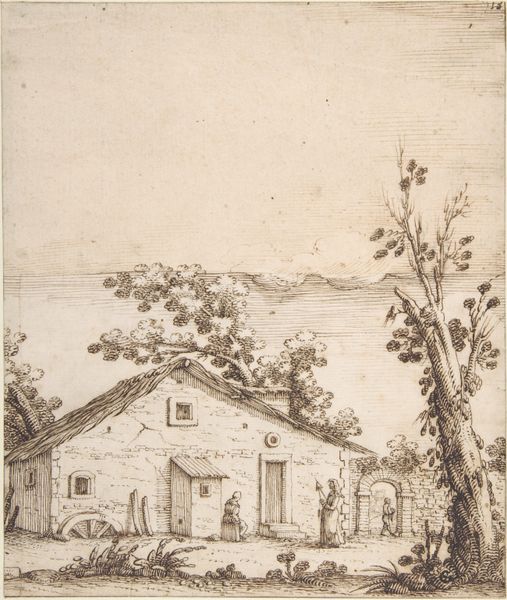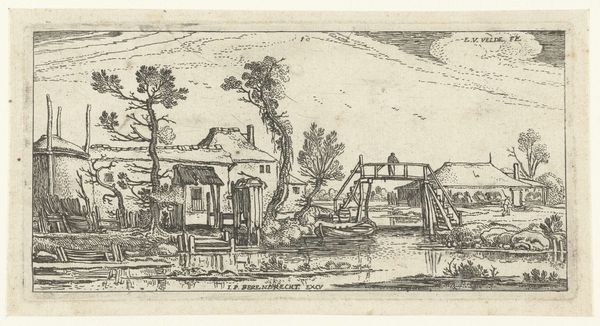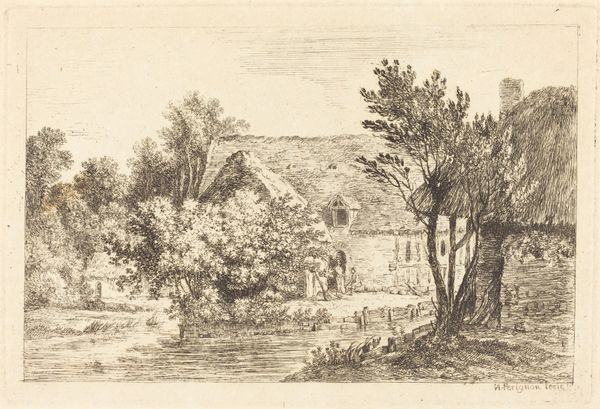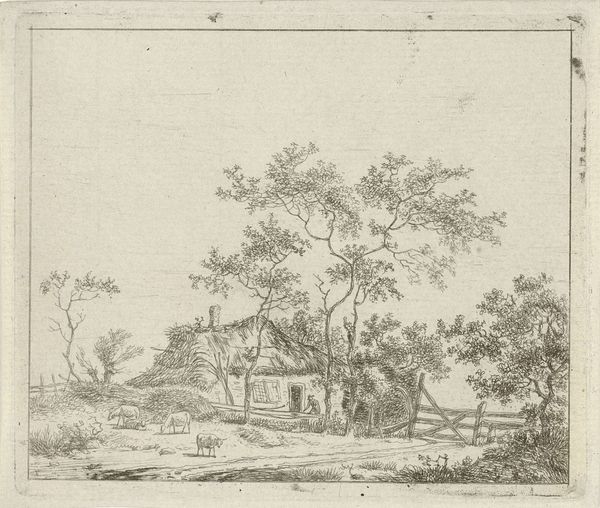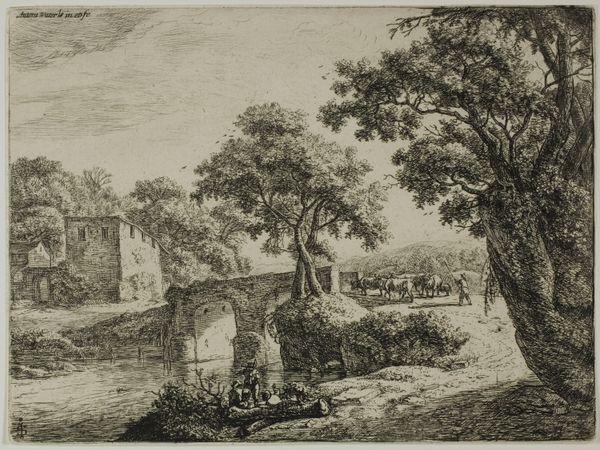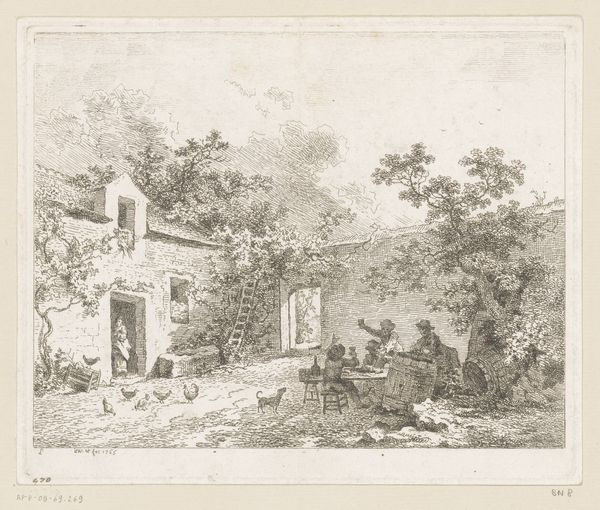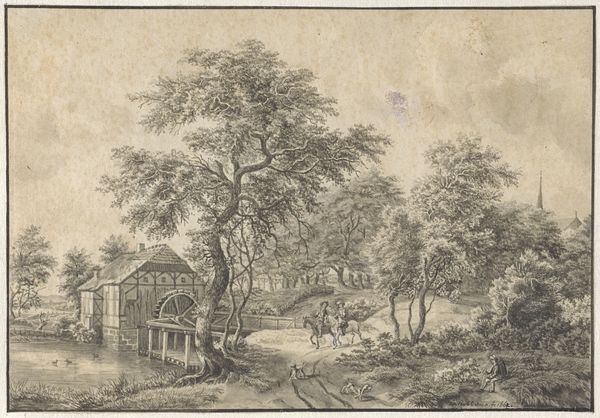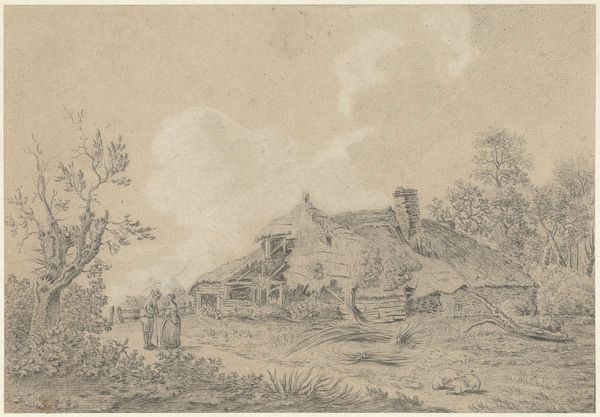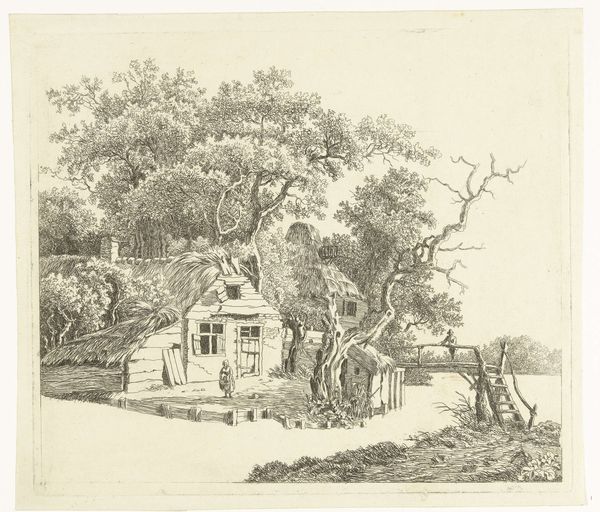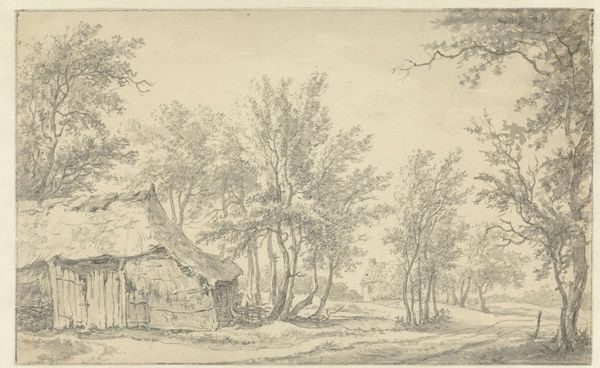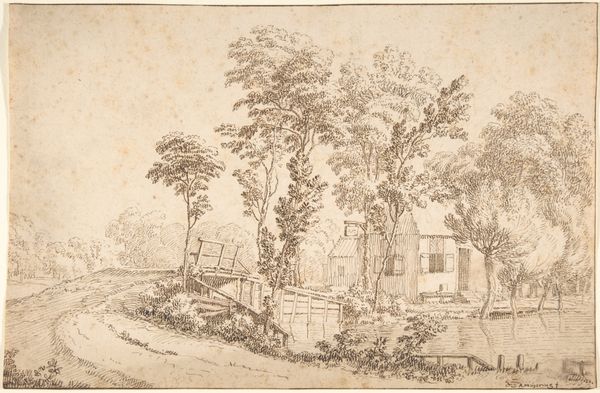
Landscape with a Farm House and a Bell Tower 1582 - 1656
0:00
0:00
drawing, etching, paper, ink
#
tree
#
drawing
#
etching
#
landscape
#
house
#
paper
#
ink
#
pencil drawing
#
italian-renaissance
#
realism
Dimensions: 5 13/16 x 8 9/16in. (14.8 x 21.8cm)
Copyright: Public Domain
Curator: Welcome! Here we have Remigio Cantagallina's "Landscape with a Farm House and a Bell Tower." Though Cantagallina's exact dates are debated, he was active roughly between 1582 and 1656. Editor: Immediately, I’m struck by the intricate detail achieved with such sparse materials: just ink on paper, but it really gives you a sense of place, of rural life. The way he captures light is particularly nice, all with line work. Curator: Indeed. Cantagallina was working within a period where landscape art was becoming increasingly popular, reflecting a broader societal interest in the natural world and rural life. His etching gives us a glimpse into the visual culture of his time. Editor: Etching is interesting, isn’t it? So dependent on material processes – the bite of the acid, the quality of the metal plate, the pressure of the printing press. The materiality informs the aesthetic in such a direct way. The image emerges, literally, from the labor. Curator: Precisely, and that speaks to the cultural importance of land, ownership, and labor in that period. Landscapes weren't just pretty pictures; they often reflected social and economic realities, conveying ideas about property and class. The presence of a church, by the way, gives insights into the local social structures and patronage networks. Editor: I notice how the farm structures themselves seem rather temporary. The use of line suggests readily available materials, quick construction. You sense a directness, a link to the necessities of making and surviving in this place. Curator: This piece shows how prints and drawings played a crucial role in disseminating imagery and ideas. Prints were accessible, which means more people across various social strata engaged with these scenes. They became powerful tools for shaping collective understanding and, frankly, biases. Editor: So the "Landscape" isn't just a pretty drawing, but almost a material document. Each mark, each area of shading and hatching, embodies choices and labor—revealing aspects of social life and economy through the very process of its creation. It makes you consider how buildings shape communities, too. Curator: Well, this etching definitely offered some insights into landscape's importance as a mode of communicating socio-political context. Editor: Yes, definitely a fascinating confluence of material reality and cultural expression.
Comments
No comments
Be the first to comment and join the conversation on the ultimate creative platform.
